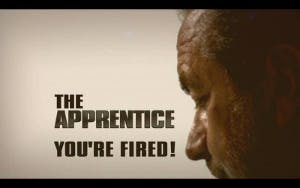Correlation, Causation, and Coaching

As 2011 approached, there wasn’t much positive to say about the Toronto Maple Leafs. A 13-19-4 record had them sitting 13th in the conference with 30 points. They were just two points up on the woeful New York Islanders, one point behind the Edmonton Oilers, and 14 points out of the playoffs.
A week earlier, Calgary was in much the same position. Entering their December 23rd game against the Dallas Stars, the Flames had a 14-18-3 record, good for 14th in the Western Conference. Nine points out of the playoffs, they had played three games more than the last-place Oilers and somehow led them by a mere two points.
What has happened to these teams?
Since January 1, the Leafs have gone 14-8-4, posting 32 points. They’ve jumped from 13th in the East to 10th, left the Oilers and Islanders in the dust, and closed the playoff gap by nine points. They now sit just five points back of eighth-place Carolina, with a game in hand.
In Calgary, something similar happened. The team’s shootout win over Dallas was the first of four straight, which in turn marks the start of a larger run: a 17-5-6 stretch that has elevated Calgary from the bottom of the conference to a playoff position. They aren’t secure by any means; with 71 points the Flames can see four opponents three points or less behind them in the standings.
Yet, despite the question I posed at the start of this article, I’m less interested in what these two teams actually did to trigger the turnaround and more interested in something they did not do: namely, fire the coach.

In either case, it would not have been hard to justify canning the bench boss. Ron Wilson, in his third season at the helm of the Leafs, had been witness to diminishing returns. The team had gone from 81 points in 2008-09 down to 74 points in 2009-10, and at the turn of the year were on pace for just 68 points. Not many coaches survive that kind of fall, and Wilson isn’t the kind of silver-tongued devil who enamours folks with his personal charms, so it seems unlikely he would have found many champions in the media or the fan-base. In Calgary, general manager Darryl Sutter stepped down less than a week after that shootout win, and Brent Sutter could easily have followed: among other things he (like Wilson) doesn’t exactly have a loyal following among NHL players.
Despite the popular support firing either would have generated, in both cases the team opted to let their struggling head coaches hang on to their jobs. In both cases, the teams turned around thanks to a variety of factors that can’t be boiled down to a single item.
Had those teams decided to make a change behind the bench, it is all but certain that change would have been credited with turning the teams around. If Ken Hitchcock or Bob Hartley or Craig MacTavish or Kevin Dineen or whoever had taken over, we would see a litany of articles from all corners of the hockey world explaining that the new coach had ‘made players more accountable’ or ‘been less overtly critical’ or had ‘shown more confidence in his guys’ or in some other way had changed the culture in the dressing room. We’d read about chemistry, leadership, attitude, and a hundred other intangibles and how they had transformed the team because the new coach was dealing with the personnel differently than the previous one had.
Not only would we read it, but we would probably believe it. The present coaches aren’t especially likeable, so we would want to believe it, and the turnaround would be dramatic, so it would be difficult not to believe it. It wouldn’t have been true, but there’s no way we could know that.
In keeping their coaches in place, the Leafs and Flames have shown us something else entirely: sometimes, without a big change, the same general group of players can put up vastly different results. That’s something worth remembering the next time we see a team make big improvements under a new coach.
Recent articles from Jonathan Willis





